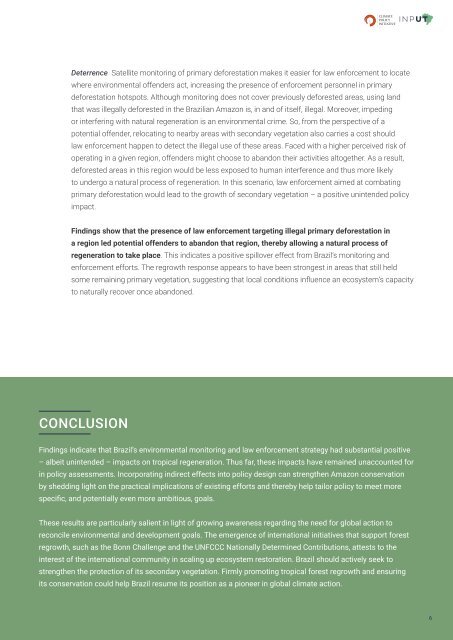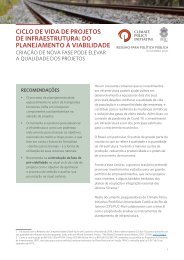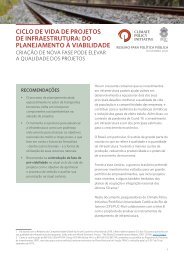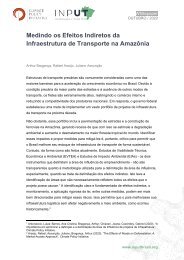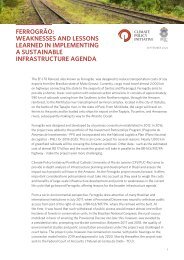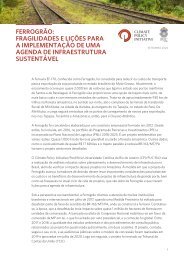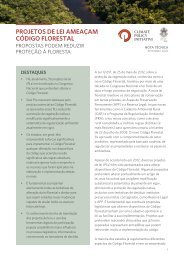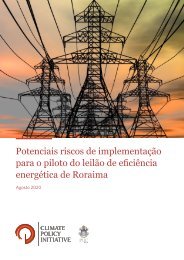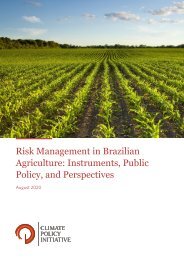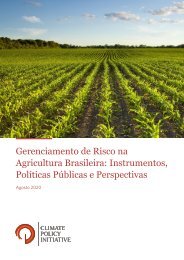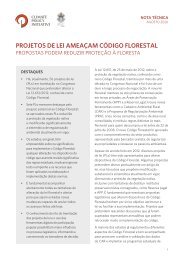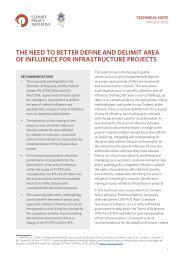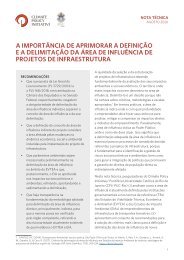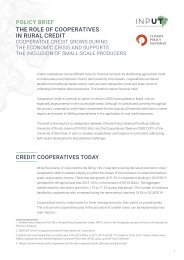Targeting Deforestation, Boosting Regeneration
Create successful ePaper yourself
Turn your PDF publications into a flip-book with our unique Google optimized e-Paper software.
Deterrence Satellite monitoring of primary deforestation makes it easier for law enforcement to locate<br />
where environmental offenders act, increasing the presence of enforcement personnel in primary<br />
deforestation hotspots. Although monitoring does not cover previously deforested areas, using land<br />
that was illegally deforested in the Brazilian Amazon is, in and of itself, illegal. Moreover, impeding<br />
or interfering with natural regeneration is an environmental crime. So, from the perspective of a<br />
potential offender, relocating to nearby areas with secondary vegetation also carries a cost should<br />
law enforcement happen to detect the illegal use of these areas. Faced with a higher perceived risk of<br />
operating in a given region, offenders might choose to abandon their activities altogether. As a result,<br />
deforested areas in this region would be less exposed to human interference and thus more likely<br />
to undergo a natural process of regeneration. In this scenario, law enforcement aimed at combating<br />
primary deforestation would lead to the growth of secondary vegetation – a positive unintended policy<br />
impact.<br />
Findings show that the presence of law enforcement targeting illegal primary deforestation in<br />
a region led potential offenders to abandon that region, thereby allowing a natural process of<br />
regeneration to take place. This indicates a positive spillover effect from Brazil’s monitoring and<br />
enforcement efforts. The regrowth response appears to have been strongest in areas that still held<br />
some remaining primary vegetation, suggesting that local conditions influence an ecosystem’s capacity<br />
to naturally recover once abandoned.<br />
CONCLUSION<br />
Findings indicate that Brazil’s environmental monitoring and law enforcement strategy had substantial positive<br />
– albeit unintended – impacts on tropical regeneration. Thus far, these impacts have remained unaccounted for<br />
in policy assessments. Incorporating indirect effects into policy design can strengthen Amazon conservation<br />
by shedding light on the practical implications of existing efforts and thereby help tailor policy to meet more<br />
specific, and potentially even more ambitious, goals.<br />
These results are particularly salient in light of growing awareness regarding the need for global action to<br />
reconcile environmental and development goals. The emergence of international initiatives that support forest<br />
regrowth, such as the Bonn Challenge and the UNFCCC Nationally Determined Contributions, attests to the<br />
interest of the international community in scaling up ecosystem restoration. Brazil should actively seek to<br />
strengthen the protection of its secondary vegetation. Firmly promoting tropical forest regrowth and ensuring<br />
its conservation could help Brazil resume its position as a pioneer in global climate action.<br />
6


